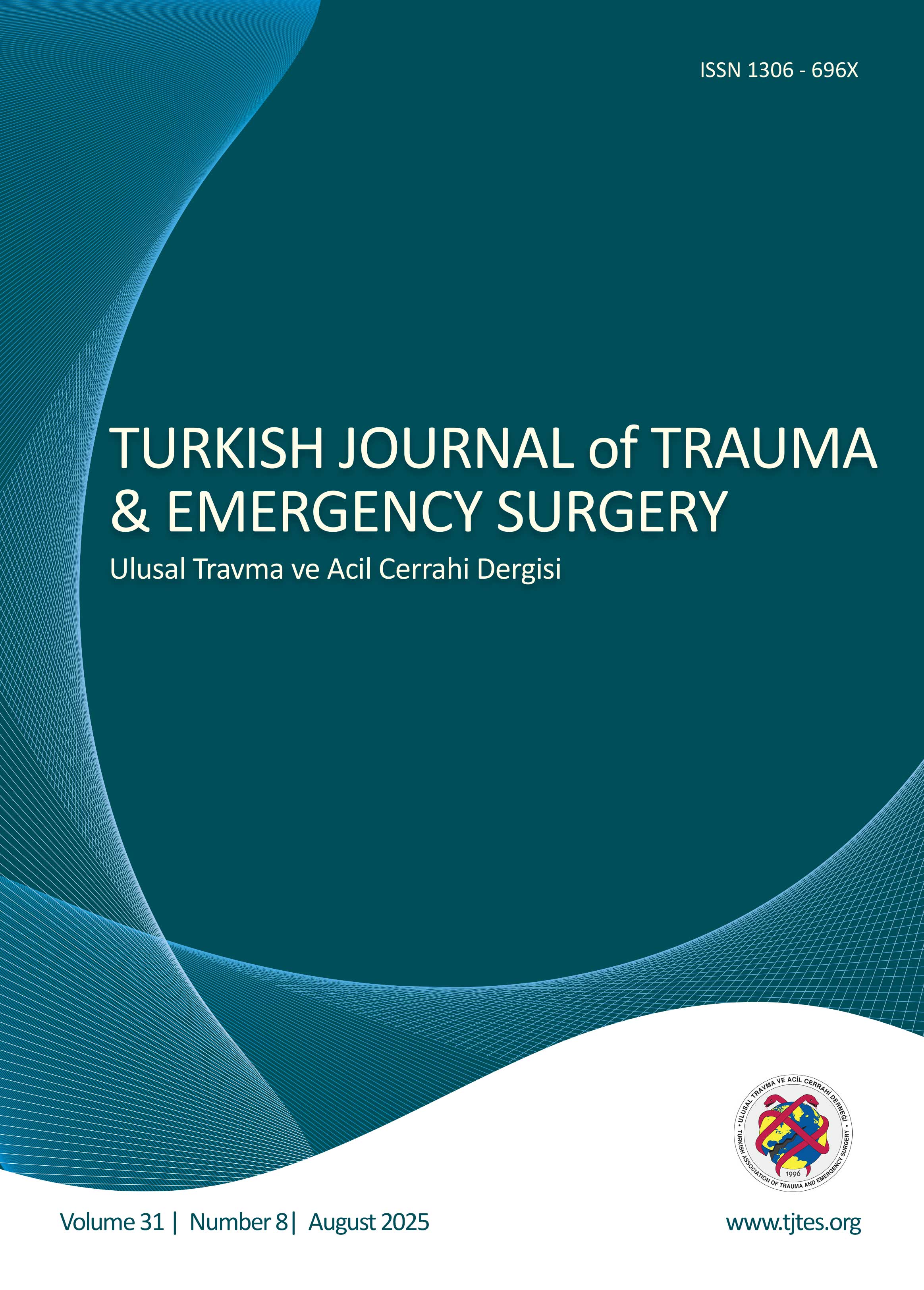Hızlı Arama
Göz travması bulunan adli olguların incelenmesi
Kerem Sehlikoğlu1, Mert Anıl Özdemir2, Şevval Nur Gidirislioglu3, Huseyin Kafadar4, Burak Ören51Adıyaman Üniversitesi Tıp Fakültesi, Adli Tıp Anabilim Dalı, Adıyaman, Türkiye2Torbalı Devlet Hastanesi, Acil Kliniği, Torbalı, Izmir, Türkiye
3Ersin Arslan Eğitim Ve Araştırma Hastanesi, Gaziantep, Türkiye.
4Harran Üniversitesi Tıp Fakültesi, Adli Tıp Anabilim Dalı, Şanlıurfa, Türkiye
5Adıyaman Üniversitesi Tıp Fakültesi, Göz Hastalıkları Anabilim Dalı, Adıyaman, Türkiye
AMAÇ: Göz yaralanması bulunan olgular için düzenlenen adli raporların yasal süreçte önemli bir yeri bulunmaktadır. Olgulardan ayrıntılı öykü alınmasının ardından, olguların kapsamlı muayene edilmesi gerekmektedir. Bu çalışmada adli tıp polikliniği tarafından göz travması bulunan olgulara yönelik düzenlenen adli raporlar incelenerek, bu olguların sosyodemografik verileri, maruz kalınan travma çeşidi, yaralanma özelliklerinin belirlenmesi amaçlandı.
GEREÇ VE YÖNTEM: Çalışmada adli olay sonucunda göz travması bulunan 424 olgu retrospektif olarak incelendi. Olgular cinsiyet, yaş, yaş grubu, olay nedeni, olay orijini (kasıtlı-kaza sonucu), medikal tanı, göz kliniğinde yatarak tedavi olup/olmadığı ve travma sonrası görme fonksiyonu verileri açısından incelendi.
BULGULAR: Olguların 310u (%73.1) erkek, 114'ü (%26.9) kadındı. Olgular en sık %27.8 (n=118) oran ile 20-29 yaş grubundaydı. Olay nedenlerine bakıldığında; darp eylemi 330 olgu (%77,8) ile en sıktı. Kadınların daha yüksek oranda aile içi şiddet mağduru olduğu gözlendi (p <0,001, Cramers V: 0.487). Muayene bulgusu olarak en sık 288 olguda (%67.9) periorbital ödem/ekimoz, ardından 71 olguda (%16.7) subkonjunktival kanama izlendi. Açık glob yaralanması geçirenlerin, kapalı glob yaralanması geçirenlere göre daha yüksek oranda göz kliniğinde yatış yapıldığı (p<0,001, Cramers V: 0.788) ve cerrahi tedavi gördüğü (p<0,001, Cramers V: 0.879) gözlendi.
SONUÇ: Çalışmada olguların büyük çoğunlukla adneksal ve ön segment ile sınırlı yaralanma geçirdikleri ve yaralanma ciddiyetinin de hafif olduğu gözlendi. Göz travması bulunan kadın olgularda, hekimlerin hastaları aile içi şiddet açısından dikkatli muayene etmesi ve değerlendirmesi önerilmektedir.
Investigation of forensic cases with ocular trauma
Kerem Sehlikoğlu1, Mert Anıl Özdemir2, Şevval Nur Gidirislioglu3, Huseyin Kafadar4, Burak Ören51Department of Forensic Medicine, Adiyaman University Faculty of Medicine, Adıyaman-Türkiye2Department of Emergency Services, Torbalı State Hospital, Torbalı, İzmir-Türkiye
3Department of Emergency Services, Ersin Arslan Training and Research Hospital, Gaziantep-Türkiye
4Department of Forensic Medicine, Harran University Faculty of Medicine, Şanlıurfa-Türkiye
5Department of Ophthalmology, Adıyaman University Faculty of Medicine, Adıyaman-Türkiye
BACKGROUND: Medico-legal reports prepared for cases involving ocular trauma play an important role in the legal process. After obtaining a detailed medical history, these cases must be examined comprehensively. This study aimed to analyze medico-legal reports prepared for ocular trauma cases referred to the forensic medicine outpatient clinic and to determine the sociodemographic characteristics of the patients, the types of trauma sustained, and the nature of the injuries.
METHODS: In this study, the forensic medical records of 424 patients with ocular trauma resulting from forensic incidents were retrospectively analyzed. The cases were reviewed based on variables such as gender, age, age group, cause of injury (type of incident), nature of the incident (intentional or accidental), medical diagnosis, site of the eye injury, whether inpatient treatment was required in the ophthalmology clinic, and whether the injury resulted in visual sequelae.
RESULTS: Of the 424 cases, 310 (73.1%) were male and 114 (26.9%) were female. The most common age group was 20-29 years, accounting for 118 cases (27.8%). The most frequent cause of injury was assault, reported in 330 cases (77.8%). Women were found to be more frequently exposed to domestic violence (p<0.001, Cramers V=0.487). The most common finding was periorbital edema/ecchymosis, observed in 288 cases (67.9%), followed by subconjunctival hemorrhage in 71 cases (16.7%). Patients with open-globe injuries were more frequently hospitalized (p<0.001, Cramers V=0.788) and underwent surgical treatment (p<0.001, Cramers V=0.879) compared to those with closed-globe injuries.
CONCLUSION: It was observed that most forensic cases examined in our study involved mild injuries, limited to adnexal structures and the anterior segment, with generally minor symptoms. Physicians are advised to carefully examine and assess female patients with ocular trauma for potential signs of domestic violence.
Makale Dili: İngilizce




